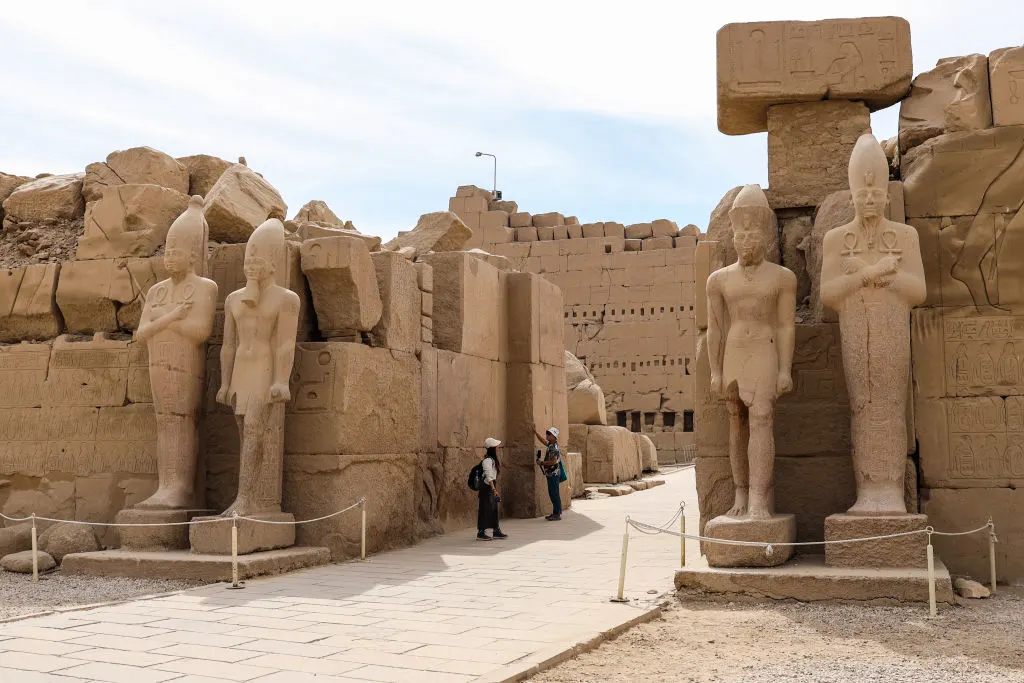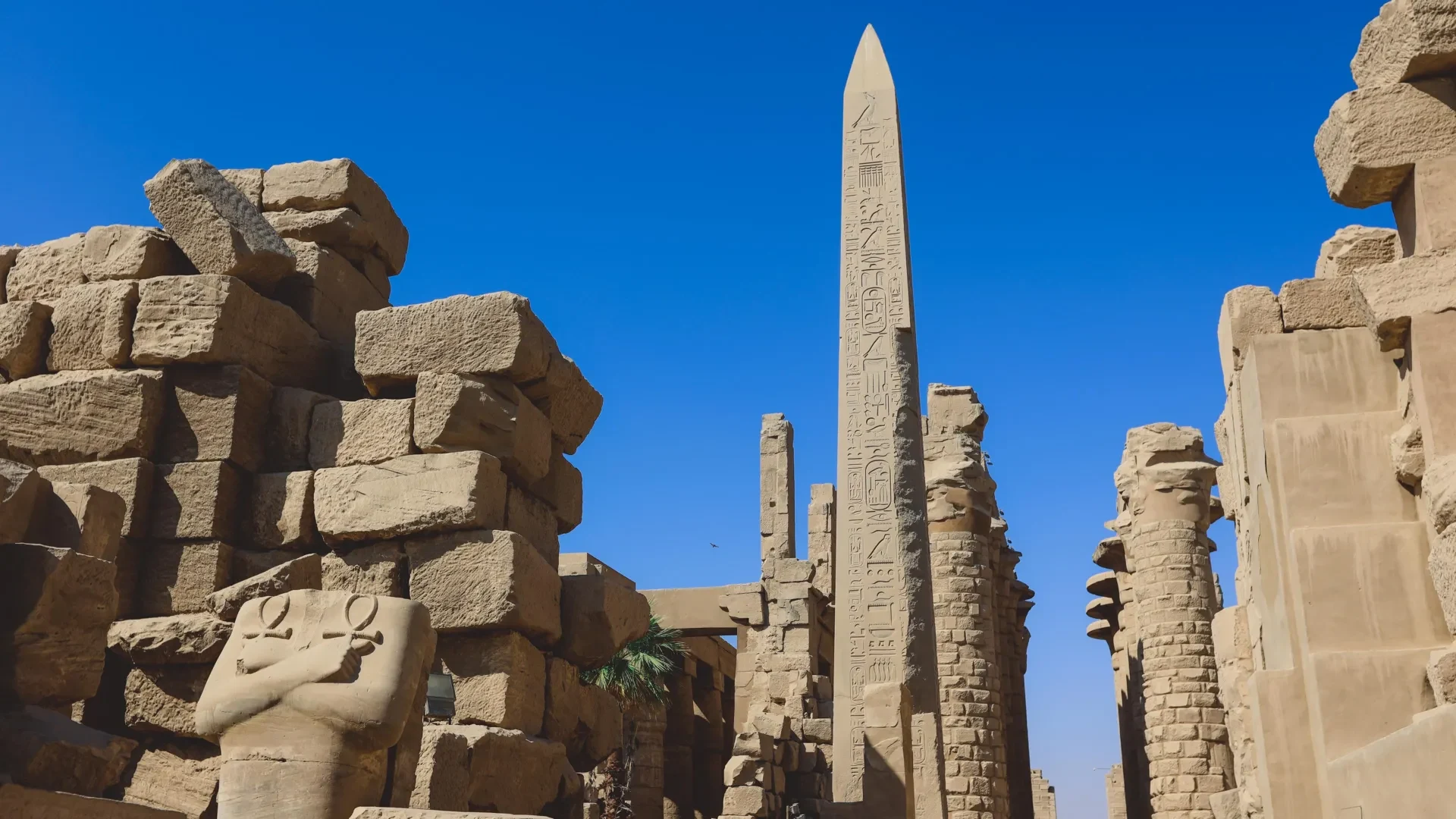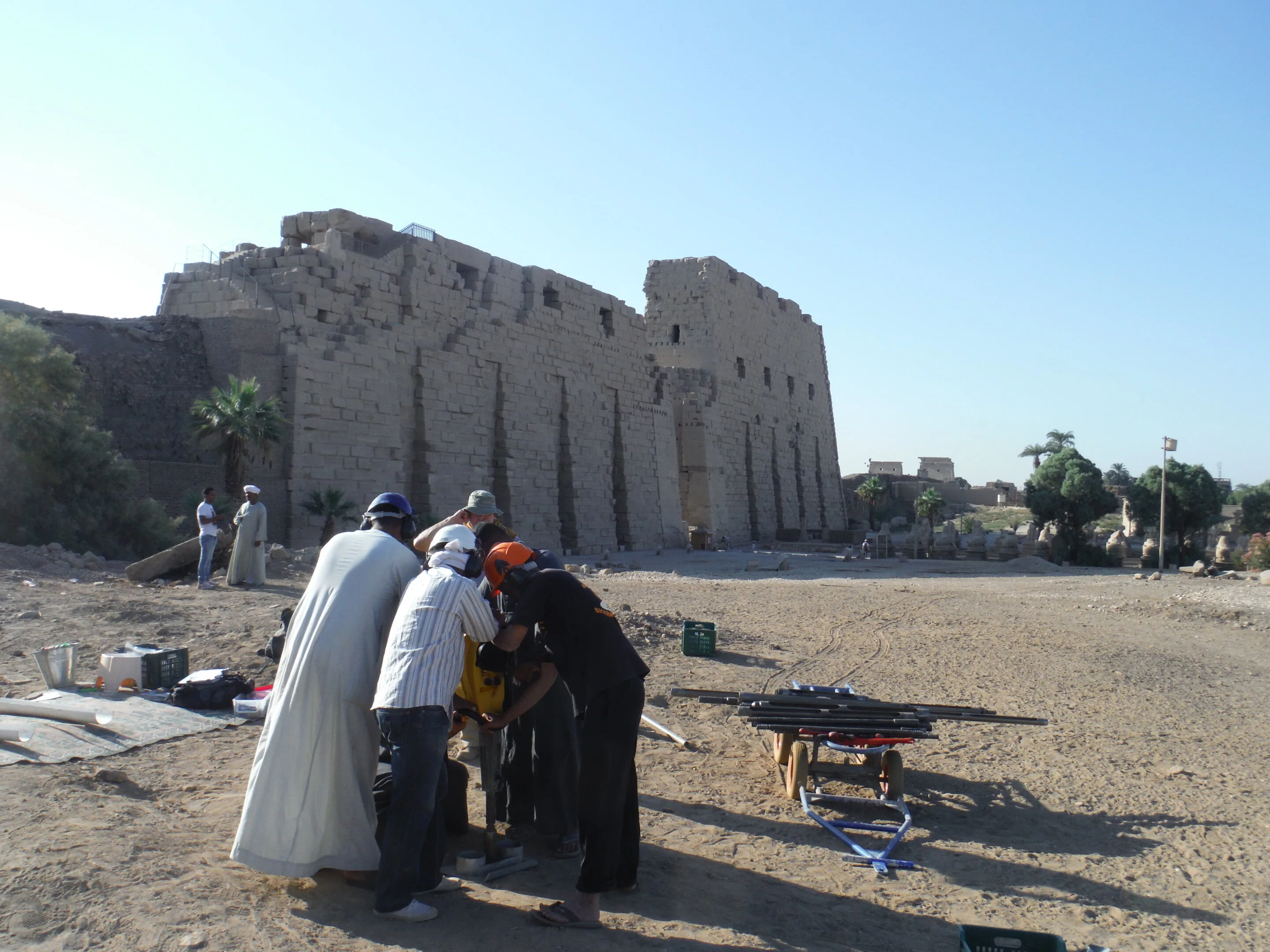A groundbreaking study reveals Egypt's Karnak Temple was first built on a Nile island, a location that aligns with ancient creation myths and settles long-standing debates about the site's age.

October 6, 2025

Source:
http://ARTnews.com
Karnak Temple Rose from a Nile Island
A landmark geoarchaeological study has revealed that Egypt’s great Karnak Temple originated on an island in the Nile River. The findings, published on October 6, 2025, in the journal Antiquity, provide the most detailed timeline to date for one of the world's most significant religious complexes.
This research settles a long-standing debate about the temple's age and initial construction.
A Timeline Revealed
The comprehensive survey confirms that permanent settlement at the site began during the Old Kingdom (c. 2591–2152 BCE). Analysis of sediment and ancient pottery shows the area was regularly flooded and uninhabitable before approximately 2520 BCE.
“The age of Karnak Temple has been hotly contested in archaeological circles, but our new evidence places a temporal constraint on its earliest occupation and construction,” stated Dr. Kristian Strutt from the University of Southampton, a co-author of the study.
The UNESCO World Heritage Site was not built on a wide, stable plain as previously thought, but on a small patch of high ground carved out by the river.
Keep up with the story. Subscribe to the PR+ free daily newsletter

Source:
ScienceDaily
Creation Myths and A Shifting River
The study suggests a powerful symbolic reason for Karnak's location. The emergence of the island from the Nile's annual floodwaters mirrors the ancient Egyptian creation myth of the “primeval mound” rising from the waters of chaos.
This direct physical link to cosmology may explain why Karnak, located in ancient Thebes, became such a revered and enduring sacred center.
Reshaping the Landscape
Researchers discovered that the Nile's channels shifted dramatically over millennia. As the waterways diverged and filled with silt, the island grew, allowing the temple complex to expand.
Natural Siltation: River channels slowly filled, creating new land.
Human Intervention: Builders actively dumped sand to accelerate land formation for construction.
“This new research provides unprecedented detail on the evolution of Karnak Temple, from a small island to one of the defining institutions of Ancient Egypt,” said lead author Dr. Ben Pennington.
Read More

Source:
http://Phys.org
Share this news:




















